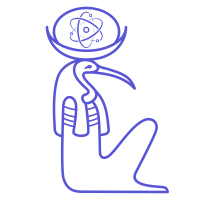Secondary 1/2 Level
Preferred terms
- In Osmosis: we prefer the term “water potential” to “water concentration”.
- For xylem and phloem: we prefer the term vessel than tube. i.e xylem vessel.
Active transport, osmosis and diffusion
| Diffusion | Osmosis | Active transport | |
|---|---|---|---|
| Down a concentration gradient | ✓ | ✓ | ✗ |
| Against a concentration gradient | ✗ | ✗ | ✓ |
| Energy needed | ✗ | ✗ | ✓ |
| Substance moved | Dissolved solutes | Water | Dissolved solutes |
| Notes | Gases and dissolved gases also diffuse | Partially permeable membrane needed | Carrier protein needed |
- In diffusion, there can be partially permeable membrane present. For instance, there is no partially permeable membrane in the diffusion of gas (e.g fart) in a room. However, there is a partially permeable membrane in the diffusion of dissolved minerals from one cell to the next (in root hair cells).
- Movement (uptake) of minerals from the soil into root hair cells can be done via diffusion (if the concentration of mineral in the soil is higher than that in the cell sap of root hair) or active transport ( if the concentration of mineral in cell sap is higher than that of the surrounding soil).
- Osmosis is a type of diffusion that dealt with water movement across partially permeable membrane.
Active transport
Active transport is the movement of dissolved molecules into or out of a cell through the cell membrane, from a region of lower concentration to a region of higher concentration. The particles move against the concentration gradient, using energy released during respiration.
Sometimes dissolved molecules are at a higher concentration inside the cell than outside, but, because the organism needs these molecules, they still have to be absorbed. Carrier proteins pick up specific molecules and take them through the cell membrane against the concentration gradient.
Examples of active transport include:
- uptake of glucose by epithelial cells in the villi of the small intestine
- uptake of ions from soil water by root hair cells in plants
Xylem and phloem
Plants have transport systems to move food, water and minerals around. These systems use continuous tubes called xylem and phloem.
One way to remember the function and position of xylem and phloem is to remember this strange term called WIFO : Water In, Food Out.
Xylem (transport Water and at the Inside)
Xylem vessels transport water and mineral salt from the roots to the leaves.
Water:
- Is absorbed from the soil through root hair cells
- Evaporates from the leaves (transpiration)
Phloem (transport Food and at the Outside)
Phloem vessels transport food produced in the leaves to other parts of the plant.

Taken from: http://leavingcertbiology.net/uploads/3/4/3/2/34323540/2668227.jpg?424
- Heart
- Made up of muscles/ cardiac muscles
- Blood vessels
- Veins – transport/ carry blood towards the heart (thin and elastic muscle layer with semi-lunar valves to prevent back flow)
- Arteries – transport/ carry blood away from the heart (thick and elastic muscle layer that handles high pressure)
NOTE:
Avoid using the word oxygenated and deoxygenated in the functions of all veins and all arteries.
This is because not all arteries transport oxygenated blood. For instance, pulmonary artery transport deoxygenated blood from the heart to the lungs.
This is because not all veins transport deoxygenated blood. For instance, pulmonary vein transport oxygenated blood from the lungs to the heart.
- Capillaries
- One cell thick wall to allow quick diffusion of nutrients and oxygen from the blood to tissue cells and waste substances and carbon dioxide from the tissue cells to the capillaries.
| Components | Functions |
|---|---|
| White blood cell | Fight infections |
| Red blood cell • contains red pigment, haemoglobin which binds oxygen • does not contain nucleus in order to have more space to store more haemoglobin to transport more oxygen • biconcave shape to increase surface area to volume ratio to allow faster diffusion of oxygen in and out of the cells | transport oxygen around the body NOTE: red blood cells do not transport carbon dioxide. Carbon dioxide is converted into another form and transported in the plasma. |
| Platelet | Play a role in blood clotting or help in blood clotting or assist in blood clotting |
| Plasma • contains water, digested food substances, ions, minerals and hormones | Transport digested food substances, hormones |
Secondary 3/4 Level

Root – xylem and phloem in the centre of the root to withstand stretching forces.
Xylem and phloem – Higher tier

Diagram showing the cross sections of a xylem and a phloem
Adapted from: http://www.bbc.co.uk/education/guides/zc9tyrd/revision/5
Animated movement with narration for transpiration and translocation.
https://www.youtube.com/watch?v=f5yRMqaDHN4
Mineral absorption mechanism in plant

https://www.news-medical.net/health/Blood-Plasma-Components-and-Function.aspx
